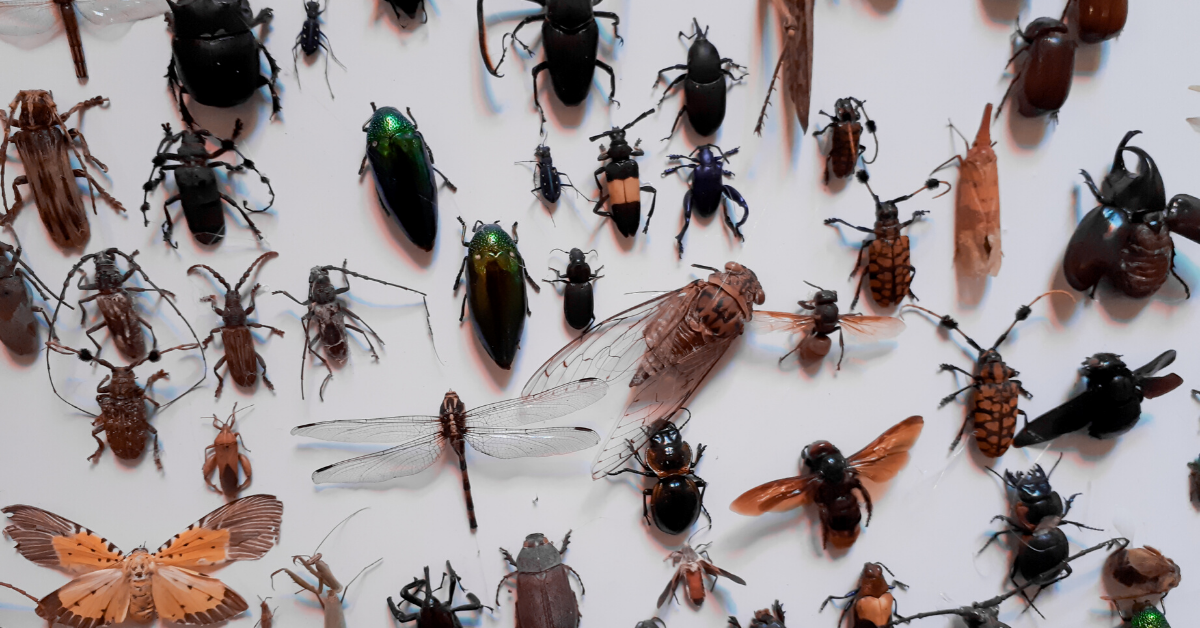Insects, bugs and other little critters make the world go around.
The truth is, that without the presence of insects, especially pollinators, an estimated 80% of all plants, and 90% of flowering plants would disappear forever.
The intricate food chain that supports the larger web of life including birds, amphibians, reptiles, and mammals also disappear. This means that there will be no lions and tigers and bears oh my!
Insects are the first step in the food chain only after bacteria and microbes. Part of my vision behind the insect revival project is to help magnify and highlight the magnificence of these tiny creatures that usually just get stepped on, and give them the respect they so deserve.
Every single insect plays a very important role inside its ecosystem, yet the mass majority of ‘Insecta’ species roles that they play, and their unique contributions are still not fully known to science.
The Insect Apocalypse Is Upon Us.
Just here in America alone, the toxic chemicals that most farmers and growers use has made the land a war zone for insects and pollinators alike, which is usually applied by airplane.
However the war on critters and ‘pests’ doesn’t end there, it also extends well into our backyards, parks, and schoolyards.
The plants that many insects feed and depend on are literally wiping them out to the point of extinction.
These multi-national chemical manufacturers are in business with the big home improvement stores and are pushing these chemical concoctions on us with their fancy-dancy propaganda and marketing techniques.
Neonicotinoids are a major culprit to both local and global insect decline
Neonicotinoids – aka ‘neonics’, are a class of insecticides that are used all around the world.
It’s estimated that they’re used in over 140 countries to help combat pests, and wage war on nature, and grow our food crops.
Neonics target the central nervous system of insects and dismantle their nerve cells from the inside out.
Neonics and many other agricultural chemicals are systemic insecticides, this means that the cell tissue of plants literally absorb them and uptake the toxin into the fabric of their cell tissues, including the stems, leaves, nectar, pollen and the sap and the fruit bodies which ultimately end up on our plates at dinner time.
Neonics are notorious for having negative and adverse ecological effects, many scientists believe that these chemicals have been the cause of ‘honey bee colony collapse disorder (CCD).
The Problem spans way beyond neonics
The is many times bigger than just neonics, the entire chemical industry is like a freight train that’s heading for a cliff that can’t stop. There are currently more than 84,000 different chemicals on the market and in circulation that are embedded in different products and materials that most of us use and come into contact with on a daily basis.
Many of these man made chemicals have negative and adverse effects on our bodies and our local, regional, and global ecosystems, where they’re manufactured, and the byproducts are disposed of. Mankind is creating a toxic legacy.
The war on bugs in our backyards
Doug Tallamy, author of Bringing Nature Home, and creator of ‘Home Grown National Park’ says “that before he moved onto his property in Pennsylvania that it was previously farmed for almost 300 years and was severely lacking in the typical native species that call it home”.
This was a result of non-native and invasive species that were introduced and were plaguing his property.
He says that the caterpillars that would usually sustain over 96% of the terrestrial bird species were mostly gone and absent.
Fast forward to today, and his property now hosts an abundant variety on native species (1,012 to be precise). THIS IS THE POWER OF NATIVE PLANTS!
And, more native bugs, caterpillars, and insects, also translates into more bird and mammal species, Doug says that now ‘ over 57 bird species have been able to breed on his property”.
For example, Doug says that “caterpillars that so beautifully transfer the sun’s solar energy from plants to other animals up the food chain are unable to properly develop and non-native, decorative Asian, (invasive plants), which we all to often beautify our yards with solely for ornamental purposes, but with little or no forethought for other species and lifeforms”.
Join the revolution and plant a wildlife habitat in your backyard.
“In the past, we have asked one thing of our gardens: that they are pretty. Now they have to support life, sequester carbon, feed pollinators, and manage water.” — DOUG TALLAMY
Wanna help?
-
Plant native plants on your property.
-
Don’t spray toxic chemicals like weedkillers, herbicides, pesticides ext…
-
Support your local farmers (don’t buy food from strangers), who practice organic, regenerative agricultural methods of growing food, and are true stewards of the land they tend to.
-
Become an advocate for keeping nature wild and untamed. This could be a portion of your yard that you don’t mow or helping to set up your land with a conservation easement to protect it indefinitely.
Resources
Homegrown national park
https://homegrownnationalpark.com/tallamy/not-in-our-yard-doug-tallamy
20 facts about insects
https://www.livescience.com/52022-startling-facts-about-insects.html
https://www.natgeokids.com/uk/discover/animals/insects/15-facts-about-bugs/
Insect apocalypse
https://en.wikipedia.org/wiki/Insect
Industrial Chemicals in existence
https://en.wikipedia.org/wiki/Chemical_industry
Colony collapse disorder

